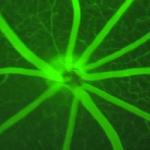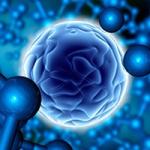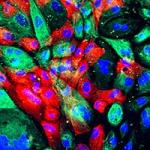
Research Topics
Cardiovascular disease is the leading cause of morbidity and mortality in the US, and sex differences are well established. Cardiovascular disease is often characterized by inappropriate cardiomyocyte death, and because adult cardiomyocytes are post-mitotic cells which undergo very limited cell division, cardiomyocyte death as occurs during myocardial infarction has very detrimental consequences. In spite of considerable effort, the mechanisms responsible for cardiomyocyte death are poorly understood. This lack of mechanistic understanding is a major contributor to the failure to translate cardioprotective drugs to the clinic. The overall goal of the research effort of my laboratory is to use a multipronged, interactive approach to elucidate the mechanisms responsible for cardiomyocyte death and to define cardioprotective strategies.
It is widely hypothesized that an increase in cytosolic calcium initiates cell death by entering mitochondria on the mitochondrial calcium uniporter (MCU) to activate a large conductance channel in the inner mitochondrial membrane known as the permeability transition pore (PTP) and that opening of this pore leads to necroptosis, a regulated form of necrotic cell death (Bauer and Murphy Circ Res 2020). Strategies to reduce PTP opening either by inhibiting the PTP directly or inhibiting the rise in its activator, mitochondrial calcium, have been proposed. A major limitation of developing strategies to inhibit the PTP is the lack of knowledge about the identity of the protein(s) that form the PTP. However, it is agreed that cyclophilin D (CypD), a matrix mitochondrial protein is an activator of PTP. To gain insight into the PTP we are studying the role of CypD in activating PTP. We have defined several novel post-translational modifications (PTM) of CypD and demonstrate that these PTMs integrate multiple signaling pathways which regulate the activity of the PTP (Amanakis Cardiovas. Res 2020). We also examined the role of isomerase activity of CypD in regulating the activity of the PTP (Casin JMCC 2023).
A primary focus of the lab centers on the regulation of mitochondrial calcium, a key activator of the PTP and cell death. We published several studies examining the role of MCU and its regulatory proteins, MICU1 (Liu et al Cell Rep 2016), MICU3 (Puente Circ Res 2020) and EMRE (Liu et al JCI Insight 2020) in controlling mitochondrial calcium and ischemia-reperfusion (I/R) injury. Because an increase in mitochondrial calcium uptake via the MCU during ischemia has been proposed to active the mitochondrial PTP, it has been hypothesized that inhibition of MCU is a viable cardioprotective approach. However there are few measurements of mitochondrial calcium during ischemia and none in an intact beating heart. To rigorously test this hypothesis we developed a new optical spectroscopy method to transmurally measure mitochondrial calcium in a beating perfused heart using mitochondrial targeted fluorescent calcium indicators (Kosmach Cell Report 2021). This new methods allow us to directly test the role of MCU and its regulators in regulating matrix calcium and the role of matrix calcium in activating the PTP. Matrix calcium levels are measured with the genetically encoded, red fluorescent calcium indicator (R-GECO1) using an adeno-associated viral vector (AAV9) for delivery. Our results demonstrate that deletion of MCU significantly reduces, but does not eliminate the accumulation of mitochondrial calcium during I/R. Elevations in mitochondrial calcium occurred in both MCU-WT and KO hearts throughout ischemia, which suggests the contribution of MCU-independent mechanisms to mitochondrial calcium overload during I/R (Petersen et al Cell Report 2023). Furthermore, our data show that increases in mitochondrial calcium occurs during ischemia. Thus, therapeutics to block increases in mitochondrial calcium and reduce PTP mediated cell death, would need to be given prior to ischemic onset to be most effective. Interestingly in WT hearts we found significantly less increase in mitochondrial calcium during ischemia in females compared to males. The mechanism responsible for this sex difference is under investigation. We are also pursuing studies to investigate the MCU-independent mechanisms responsible for the increase in mitochondrial calcium during ischemia. These studies integrate cutting edge technologies to push back the frontiers of our understanding of mechanisms of cardiomyocyte death in cardiovascular disease.
Biography
Dr. Elizabeth Murphy received her PhD from the University of Pennsylvania in Biochemistry, followed by postdoctoral studies in Physiology and then an assistant research professor at Duke University Medical Center. Before joining the NHLBI in 2006 as the head of the Cardiac Physiology Section, she was the head of the Cell Biology Group at the National Institute of Environmental Health Sciences. She became a Fellow of the American Heart Association in 2001 and a Fellow of the International Society for Heart Research in 2007; she received the NHLBI Award for Outstanding Mentorship in 2011. Dr. Murphy has authored or co-authored more than 200 papers and reviews. Dr. Murphy is a member of the American Heart Association-Council of Basic Cardiovascular Research, American Physiological Society, and International Society for Heart Research. She served as president of the International Society for Heart Research from 2016 to 2019. She serves as Deputy Editor of Circulation Research. She is also the North American Coordinator of a Leducq Transatlantic Network of Excellence on Targeting Mitochondria to Treat Heart Disease. She received the Peter Harris Research Achievement Award from the International Society for Heart Research in 2020.
Selected Publications
- Roman B, Mastoor Y, Sun J, Chapoy Villanueva H, Hinojosa G, Springer D, Liu JC, Murphy E. MICU3 Regulates Mitochondrial Calcium and Cardiac Hypertrophy. Circ Res. 2024;135(1):26-40.
- Petersen CE, Sun J, Silva K, Kosmach A, Balaban RS, Murphy E. Increased mitochondrial free Ca(2+) during ischemia is suppressed, but not eliminated by, germline deletion of the mitochondrial Ca(2+) uniporter. Cell Rep. 2023;42(7):112735.
- Casin KM, Bustamante M, Amanakis G, Sun J, Liu C, Kitsis RN, Murphy E. Loss of cyclophilin D prolyl isomerase activity desensitizes mitochondrial permeability transition pore opening in isolated cardiac mitochondria, but does not protect in myocardial ischemia-reperfusion injury. J Mol Cell Cardiol. 2023;183:67-69.
- Kosmach A, Roman B, Sun J, Femnou A, Zhang F, Liu C, Combs CA, Balaban RS, Murphy E. Monitoring mitochondrial calcium and metabolism in the beating MCU-KO heart. Cell Rep. 2021;37(3):109846.
- Puente BN, Sun J, Parks RJ, Fergusson MM, Liu C, Springer DA, Aponte AM, Liu JC, Murphy E. MICU3 Plays an Important Role in Cardiovascular Function. Circ Res. 2020;127(12):1571-1573.
Related Scientific Focus Areas


Molecular Biology and Biochemistry
View additional Principal Investigators in Molecular Biology and Biochemistry

This page was last updated on Thursday, August 21, 2025